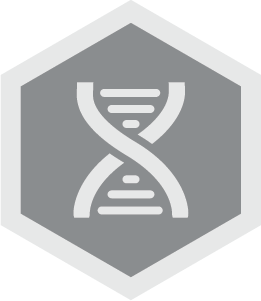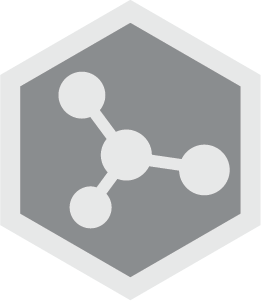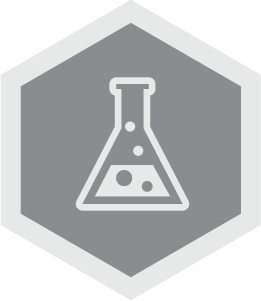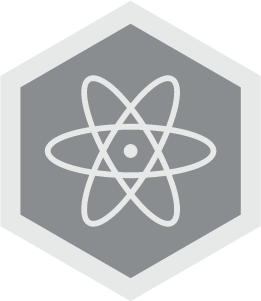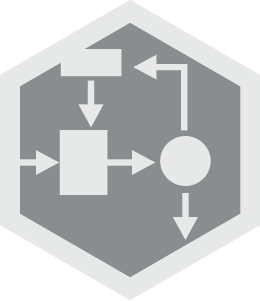Science & Technology Overview
Integrated Energy Systems
Through research and demonstration, INL advances integrated energy generation, storage and delivery technologies. The integrated systems approach is a marked change from traditional energy system designs typically focused on single generation sources to support a single energy demand (e.g., a nuclear plant that provides electricity to meet grid demand). INL is leveraging its expertise in nuclear and renewable energy systems to lead the world in developing integrated, clean, multigeneration energy systems that incorporate both heat and power for grid services and industrial processes. This clean heat and power can efficiently and economically produce clean hydrogen, and when combined with biogenic carbon, a broad spectrum of chemical commodities and low-emission fuels. By innovating to harness electricity, heat and hydrogen, INL accelerates a clean energy-based economy while enhancing grid reliability, resilience and affordability.
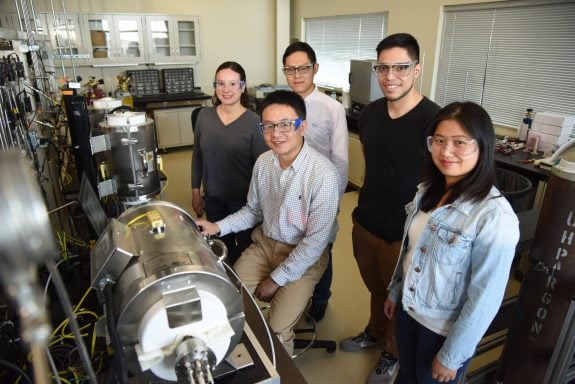
team check the performance of the solid oxide electrochemical cells for hydrogen production.
Demonstrating high-efficiency thermal energy use
To support industrial processes and grid infrastructure, INL demonstrates at-scale thermal energy generation, storage, delivery and utilization. INL has invested in new facilities, including the Dynamic Energy Transport and Integration Laboratory (DETAIL), and equipment to emulate thermal energy generation from nuclear, geothermal, concentrated solar and industrial sources using multiple controllable heaters.
INL develops and demonstrates nuclear energy applications beyond the electric grid by using nuclear heat in high-temperature electrolysis to produce hydrogen. This approach not only diversifies the product stream of nuclear plants, but significantly improves the efficiency of producing hydrogen compared to low-temperature electrolysis techniques. As the lead laboratory for nuclear energy research, development and demonstration (RD&D), this differentiator established INL as the leader in testing and demonstrating high-temperature electrolysis for hydrogen production. As a result, INL is a key partner in the Department of Energy’s (DOE) H2@Scale program that demonstrates at-scale hydrogen production, transport and storage. Collaborating with the National Energy Technology Laboratory, INL uses nuclear energy to generate hydrogen needed to drive carbon conversion to high-value products that can be used to produce heat and electricity or to be distributed to consumer markets, taking another step toward closing the carbon cycle.
INL also supports several DOE cost-shared projects with nuclear utility companies and technology providers by leveraging the lab’s unique techno-economic assessment capabilities and the DETAIL facility. Nuclear generation of hydrogen will be demonstrated at several nuclear plant sites with industry partners to reduce the technical and safety risks of scaling up hydrogen production under the clean energy hubs established by DOE. Link to Integrated Energy Systems
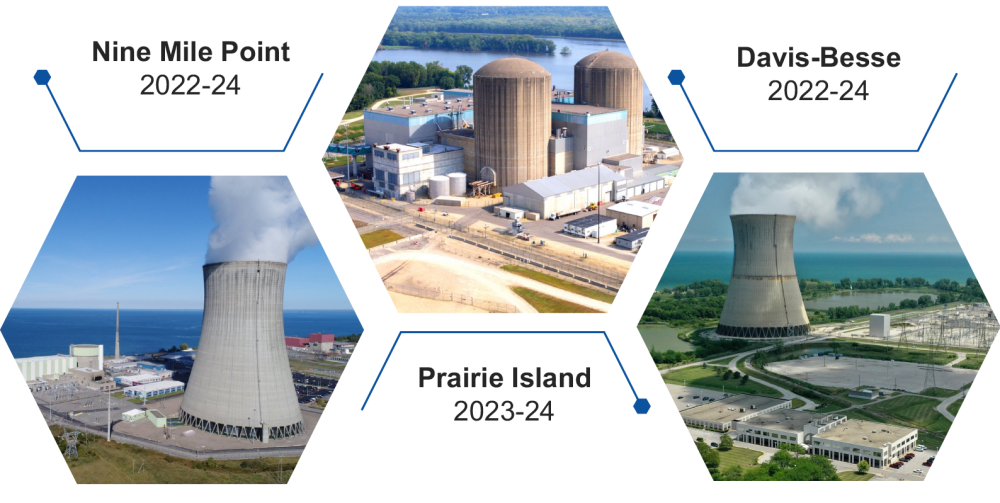
Enabling a sustainable, resilient and reliable grid
As the electrical grid evolves to incorporate diverse low-carbon sources, maintaining grid reliability and resilience creates new challenges. INL research improves electric grid reliability and resilience with advanced control systems that combine physics- and artificial-intelligence-based modeling and controls techniques, and associated sensor systems to enable rapid control and tighter coordination between generation and energy storage assets. For example, INL works with other national labs through the FlexPower project to demonstrate a flexible controller architecture for utility-scale generation. INL also works with communities to improve local grid resilience.
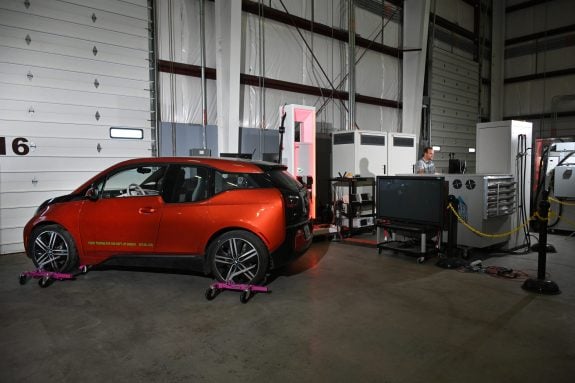
INL participates with other national labs in DOE’s EVs@Scale consortium to support integrating widespread electric vehicle (EV) charging with the grid. INL’s charging simulation platform, Caldera, is used to virtually demonstrate how future mass adoption of EVs will interact with the grid across a range of geographic and seasonal conditions in the U.S. The Caldera team is developing and demonstrating smart charge management strategies to integrate EV charging with varying mixes of renewable generation, load characteristics and grid architectures through partnerships with electric utilities.

Developing novel chemical and industrial processes
Developing chemical and industrial processes using low-emissions energy is crucial to a clean energy future. INL evaluates and researches diverse clean energy generation options for industrial processes such as nuclear generated heat to replace fossil fuel combustion in steam boilers, chemical processes, metals reduction and refining, glass melting, and cement clinker mineralization, to name a few.
Fundamental research supporting feedstocks for a circular economy is a growing area at INL. Significant upgrades to the Biomass Feedstock National User Facility have enabled reuse, recycling and remanufacturing fundamental materials contained in biomass and municipal solid waste toward a sustainable and resilient U.S. energy economy.
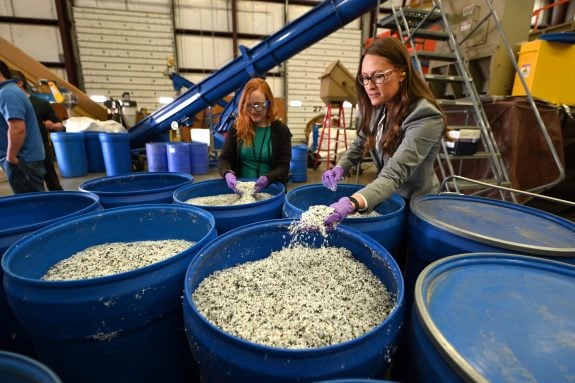
recycle materials supporting feedstocks for a circular economy.
Enhancing tools and approaches to optimize integrated energy systems operations
INL optimizes integrated energy systems by combining data, artificial intelligence, controls, cybersecurity and modeling to improve system deployment and adoption. In collaboration with the National Renewable Energy Laboratory and the National Energy Technology Laboratory, INL is exploring the future of integrated, multigeneration energy systems and developing novel approaches to provide power, heat, mobility and other energy services through a new framework for engineering-based modeling and analysis.
INL leads the model development of the Framework for Optimization of ResourCes and Economics for integrated energy systems. This system is uniquely configured to evaluate technical and economic performance and to optimize design and energy dispatch using advanced control approaches for multiple nuclear reactor types, renewable technologies and energy users. The Human Systems Simulation Laboratory was used in conjunction with a digital twin to test concepts for dispatching thermal and electrical power from nuclear reactors to a high-temperature electrolysis (hydrogen) plant, a key step toward scaling demonstration projects to full commercial capacity.
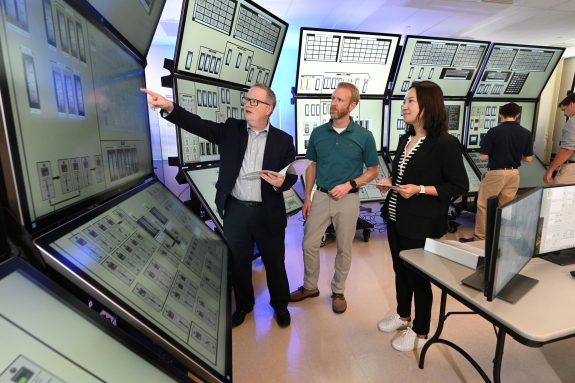
where new technologies are tested prior to commercial implementation.
ADVANCED COMPUTER SCIENCE, VISUALIZATION, AND DATA
The ability to have a widely recognized role in advances in all applications in computational science and engineering. A core capability in these areas would involve expertise in areas such as programming languages, high-performance computing tools, peta- to exa-scale scientific data management and scientific visualization, distributed computing infrastructure, programming models for novel computer architectures, and automatic tuning for improving code performance, with unique and/or world-leading components in one or more of these areas. The capability requires access to (note: these resources do not need to be co-located) a high-end computational facility with the resources to test and develop new tools, libraries, languages, etc. In addition, linkages to application teams in computational science and/or engineering of interest to the Department of Energy and/or other Federal agencies would be beneficial to promptly address needs and requirements of those teams.
BIOLOGICAL AND BIOPROCESS ENGINEERING
Applies understanding of complex biological systems and phenomena to design, prototype, test and validate processes components, technologies, and systems relevant to (1) bioenergy production, (2) environmental contaminants processing, and (3) global carbon cycling and biosequestration. Primary supporting disciplines include chemical engineering, agricultural science, fermentation science, materials science and engineering, and systems science.
CHEMICAL AND MOLECULAR SCIENCE (EMERGING)
The ability to conduct experimental, theoretical, and computational research to fundamentally understand chemical change and energy flow in molecular systems that provide a basis for the development of new processes for the generation, storage, and use of energy and for mitigation of the environmental impacts of energy use. Areas of research include atomic, molecular, and optical sciences; gas-phase chemical physics; condensed phase and interfacial molecular science; solar photochemistry; photosynthetic systems; physical biosciences; catalysis science; separation science; actinide chemistry; and geosciences.
CHEMICAL ENGINEERING
The ability to conduct applied chemical research that spans multiple scales from the molecular to macroscopic and from picoseconds to years. Chemical engineering translates scientific discovery into transformational solutions for advanced energy systems and other U.S. needs related to environment, security, and national competitiveness. The strong linkages between molecular, biological, and materials sciences, engineering science, and separations, catalysis and other chemical conversions provide a basis for the development of chemical processes that improve the efficiency, economy, competitiveness, environmental acceptability, and safety in energy generation, conversion, and utilization. A core capability in chemical engineering would underpin R&D in various areas such as nanomanufacturing, process intensification, biomass utilization, radiochemical processing, dielectric materials, advanced conducting materials, high-efficiency clean combustion, and would generate innovative solutions in alternative energy systems, carbon management, energy-intensive industrial processing, nuclear fuel cycle development, and waste and environmental management.
CYBER AND INFORMATION SCIENCES
The disciplines, technologies, and practices designed to protect, analyze, and disseminate information from electronic sources, including computer systems, computer networks, and sensor networks. A core competency in this area would involve recognized expertise in one or more of the following topics: cyber security, information assurance, information analytics, knowledge representation, and information theory, control systems design and engineering, embedded systems, reverse engineering, and advanced hacking techniques. This core competency would be applied to: the protection of information systems and data from theft or attack; the collection, classification, analysis, and sharing of disparate data; and the creation of knowledge from heterogeneous information sources; securing control systems integrated into critical infrastructure; and increasing security, reliability, and resilience of automated processes and systems.
DECISION SCIENCE AND ANALYSIS
Derives knowledge and insights from measured and modeled data sets to further the understanding of and tradeoffs among resource and technology options, to identify and quantify the risks and impacts of current and emerging technologies on environmental systems, and to assess the impact of market dynamics, human behavior and regulations, policies or institutional practices on the development and uptake of technology. Primary supporting disciplines include engineering, environmental science, applied math, finance, business, social and political science, and market and behavioral economics. This capability provides credible and objective information to support DOE and others to support strategic planning and program direction, policy formulation and implementation, efforts to remove market barriers to deployment and engagement with stakeholders.
EARTH, ENVIRONMENTAL, AND ATMOSPHERIC SCIENCE
The ability to understand and predict the physical, chemical, and biological structure and function of subsurface environments to enable systems-level environmental prediction and decision support related to the sustainable development of subsurface resources, environmentally-responsible use of the subsurface for storage, and effective, mitigation of the impacts of environmental contamination from past nuclear weapons production and provide a scientific basis for the long-term stewardship of nuclear waste disposal via the integration of laboratory-specific research facilities, instrumentation and/or leadership-class computational systems, and multidisciplinary teams of individuals with expertise in environmental subsurface science and related disciplines in microbial ecology and biogeochemistry. This unique combination of tools and expertise is the foundation for research on (1) linking research across scales from the molecular to field scale, (2) integration of advanced computer models into the research and (3) multidisciplinary, iterative experimentation to understand and nutrient cycling and contaminant transport in complex subsurface environments. This ability can contribute to mitigating the impacts of environmental contamination from past nuclear weapons production and provide a scientific basis for the long-term stewardship of nuclear waste disposal, as well as understanding subsurface environments and their role in the functioning of terrestrial ecosystems.
LARGE-SCALE USER FACILITIES/ R&D FACILITIES/ADVANCED INSTRUMENTATION
The ability to conceive, design, construct and operate leading-edge specialty research facilities available to universities, industry, and national laboratories customers to conduct groundbreaking research and development activities and/or ‘at scale’ testing and demonstration of technology. This includes the ability to effectively manage construction of $100 million or greater one-of-a-kind scientific facilities, and to host hundreds to thousands of U.S. and international users in addition to carrying out world-class research at the facility itself. The ability to conceive, design, build, operate and use first-in-class technical instruments intended for a particular research purpose, often requiring the material expertise of multiple scientific disciplines. Instrumentation that can be created by a small number of individuals or that would sit on a laboratory benchtop is not considered part of this core capability.
MECHANICAL DESIGN AND ENGINEERING
Applies the principles of physics, mechanics, and materials science to analyze, design, test, validate, and enable operation of advanced engineered systems, machines, and tools. Includes equipment used to move or extract energy bearing materials (e.g., oil, gas, coal) or from moving fluids (e.g., water, wind, steam), as well as equipment used to convert energy to useful services (e.g., mobility, home heating and cooling, robotics, imaging devices, etc.) or to manufacture products. Primary supporting disciplines include physics, materials science, aerospace engineering, mechanical engineering, chemical engineering, electrical engineering, and computational science.
NUCLEAR ENGINEERING
The ability to use a broad range of facilities, instrumentation, equipment and, often, interdisciplinary teams that apply the knowledge, data, methods, and techniques of nuclear engineering, mechanical engineering, nuclear reactor physics, measurable science, and risk assessment to missions of the Departments of Energy and Homeland Security. The elements of this capability are often brought together in unique combinations with those of other disciplines to address high priority needs such as new and improved energy sources and systems; advanced instrumentation for nuclear systems; accelerator science and technology; and development of methods and systems to assure nonproliferation and combat terrorism.
POWER SYSTEMS AND ELECTRICAL ENGINEERING
Applies understanding of electromagnetic phenomena to design and engineer circuitry, electrical and electronic devices and equipment, sensors, instruments, and control systems to address the efficiency and reliability of power transmission and distribution systems, and the interface of the grid with variable generation and modern loads. Primary supporting disciplines include electrical engineering, power systems engineering, computational science, and materials synthesis, characterization, and processing.
SYSTEMS ENGINEERING AND INTEGRATION
The ability to solve problems holistically from the concept and design phase to ultimate deliverable and completion phase, by synthesizing multiple disciplines, and to develop and implement optimal solutions. The ability to develop solutions that address issues of national energy and environmental security. Areas of application of this capability include development of programs in energy supply, storage, transportation, and efficiency; and deployment of novel solutions to materials and sensor problems in fields of interest to the Department of Energy and/or the Department of Homeland Security.


